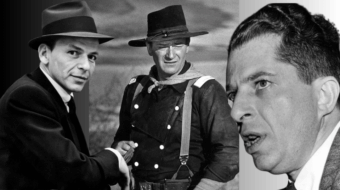
Chileans voted in a national referendum on Oct. 25. Commentary reflects what happened: “We began to dig the grave of the Pinochet-era constitution and the market economy,” one report said. This was an “overwhelming, historical triumph of the people,” declared Chile’s El Siglo newspaper.
Voters chose either yes or no on holding a constituent assembly that would create a new constitution to replace the one written under the dictatorship of Gen. Augusto Pinochet. They also indicated their preference as to whether the constituent assembly would consist of 155 delegates all elected by the people, or would be “mixed,” with half the delegates being members of Chile’s Congress and the other half elected by the people.

Results showing 78.2% of the voters in favor of a constituent assembly and 79.2% of them choosing an entirely elected one had “force enough to be respected by the financial, civil, and military bastions of conservatism,” according to a report. Delegates will be selected at a national election on April 11, 2021. The new Constitution will be submitted to a popular vote no later than August 2022.
The referendum and the prospect of a constituent assembly, taken together, represent a milestone in a long process that recently featured a year-long series of large demonstrations initially led by students that called for political change. At their start, in October 2019, millions of people were in the streets throughout the country. Despite violent repression by security forces, massive outpourings would continue for months, diminishing in numbers only because of the COVID-19 pandemic.
The protests centered on the government’s privatization and austerity programs that diminished healthcare, pensions, and education. Grievances included corporate control of natural resources and abuse of Indigenous peoples. Protesters regularly demanded the resignation of billionaire President Sebastián Piñera and called for a constituent assembly.
Leading directly to the just completed plebiscite was a “social pact” announced Nov. 15, 2019, involving the Piñera government and political parties represented in Chile’s congress. That agreement linked peace in the streets with approval for a referendum that was to have taken place on April 26. Because of the pandemic, it was postponed until Oct. 25.
The protests and plebiscite reflect movement toward political change in Chile going back decades. Strength built up by leftists during the 1950s and ’60s prepared the way for socialist Salvador Allende to become Chile’s president in 1970. A U.S.-supported military coup in 1973 installed Gen. Pinochet as ruler and led immediately to President Allende’s death. Brutal repression and dictatorial rule would follow.
Pinochet’s government imposed a new constitution in 1980 that enabled neoliberal economic reforms—making Chile the first laboratory for the free market agenda that swept the world in the 1980s and ’90s. A 1988 referendum ended Pinochet’s tenure, but the 1980 Constitution remains in force, with modifications, as do austerity and privatization programs protected by the Constitution.
Critics lost no time in identifying potential problems with the constituent assembly and the choosing of delegates. Those whose protests stimulated movement toward an assembly may end up, for example, not being represented there, particularly young people.
Most of the protesters belonged to social movements and were unaffiliated with political parties, which are spurned by most Chileans. There is worry that candidates for election to the constituent assembly will be limited to those approved by existing political coalitions and that independent candidates will be few. Cynicism remains high; turnout for the constitutional referendum was only 51%.

The aforementioned “new social pact” agreed to by President Piñera and politicians serving in the National Congress gives rise to a very serious concern. A general strike had preceded that agreement. Then, reportedly, two days before the agreement was announced, the Chilean military, enabler of the dictatorship, issued an ultimatum communicating that unless the government ended protests in the streets within 48 hours, the military itself would do so. The message is taken that military domination in Chile has yet to disappear.
Political analyst Marcos Roitman Rosenmann points out also that most political parties agreeing to the pact and supporting a new constitution “oppose recognizing the rights of the Mapuche [Indigenous] people and others deny the public sector’s role in creating…policies on health care, education, and housing.” He fears “a sweetened version of neoliberalism endorsed by some spurious delegates to the constituent assembly.”
Lastly, the agreement to move ahead with the plebiscite stipulated that the resulting constituent assembly would operate with a two-thirds majority being required for approving elements of a new constitution. The resulting veto power gained by conservatives led one observer to predict that the wealthy class “will dig in its heels to prevent any constituent process that would include economic redistribution of any kind.” Presently, 1% of Chileans command 26.5% of the country’s wealth.
Chile’s Communist Party and other leftist parties formed an alliance they named “Chile Digno” for the purpose of agitating for a referendum vote that would approve a new constitution. Looking at the near future, an alliance press release allows as how Chileans did take a “giant step” and did “throw the Constitution of Pinochet on the trash heap.” But there’s “one step more.”
For the sake of “a new constitution that is democratic, multi-ethnic…for women, for the people, not for the elites, we will build unity among anti-neoliberal forces and offer a single list of representatives for the convention. They will speak for this transformative project, guarantee faithfulness with the people who provided this opportunity, and assure that the constitutional convention carries the mandate of a true constituent assembly.”

Chile’s CUT trade union federation publicized the fact that at the time of his death on Sept. 11, 1973, President Salvador Allende was on the verge of proposing a plebiscite aimed at moving toward a new constitution. His notes on his ideal of a constitution were published posthumously in 1990.
There Allende states, “The people for the first time understand that the Fundamental Charter will originate not from above, but from the very roots of their own convictions. They will in that way assure their existence as a worthy, independent, and sovereign people.” Allende envisioned a new congress that included a “chamber of workers” elected nationally.










